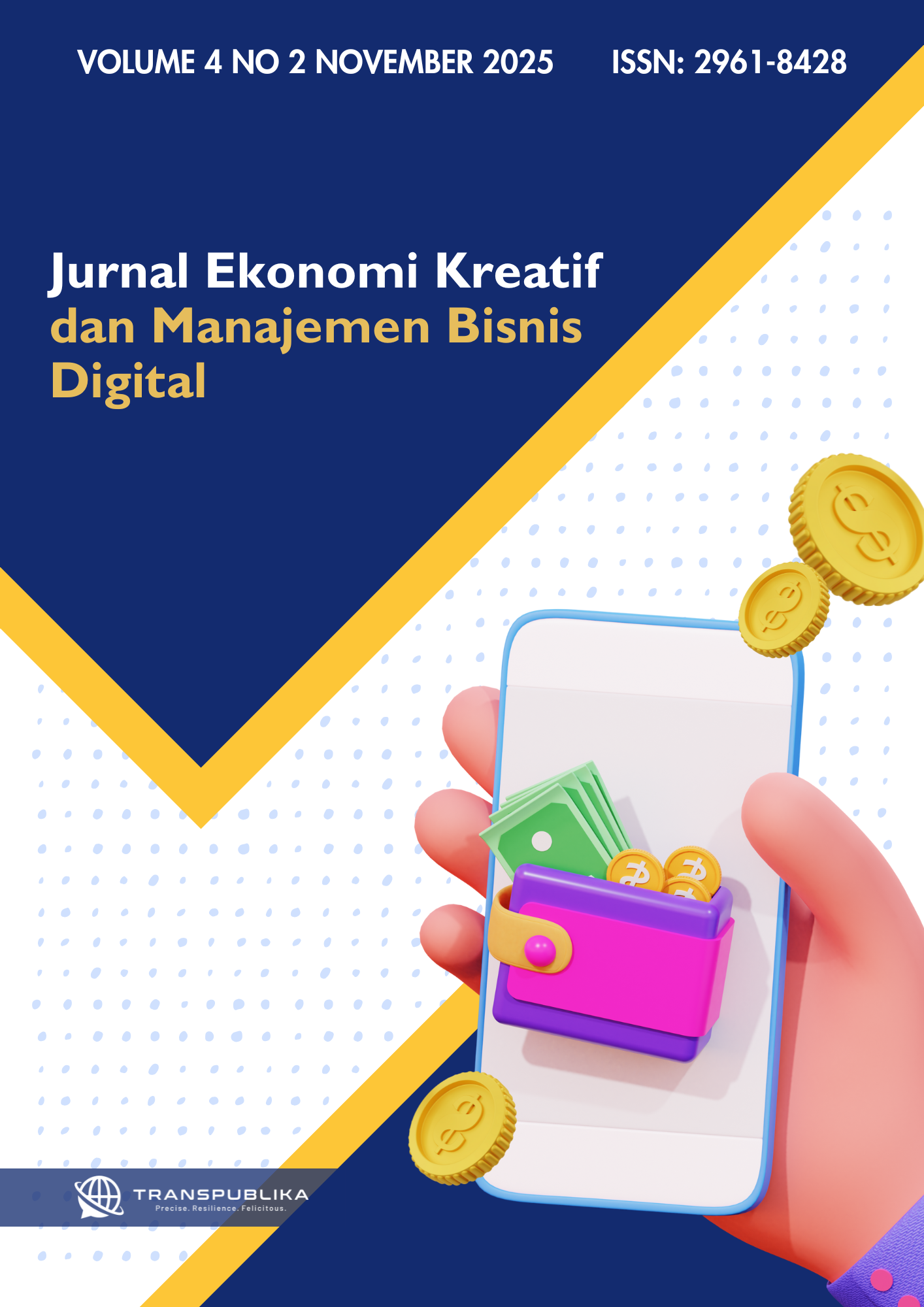Development of a Marketplace Building Store Using a Value Proposition Design Approach (Case Study: XYZ.COM)
Abstract
This research is designed with the aim of identifying the various problems that are commonly faced by users of the XYZ.com building materials marketplace and, at the same time, developing appropriate solutions by applying the Value Proposition Design approach in order to address those problems more effectively. The main challenges that XYZ.com is currently experiencing are related to user adoption as well as overall user satisfaction, which then become the primary focus and central concern of this research. In conducting the study, qualitative research methods were employed, with data collection carried out through in-depth interviews combined with observation activities to obtain richer insights. This research is also grounded in the pragmatism paradigm, which emphasizes practical considerations in problem-solving. The expected contribution of this research is not only to provide practical recommendations that can enhance XYZ.com’s services but also to add valuable insights to the existing literature on e-commerce platform development in Indonesia.
References
Al-Maulid, H., Rahaningsih, N., & Ali, I. (2024). Implementasi Agile dalam Pengembangan E-Commerce untuk Penjualan Baju Distro: Studi Kasus Victorem Store. JATI (Jurnal Mahasiswa Teknik Informatika), 8(2), 2227–2235.
Almquist, E., Senior, J., & Bloch, N. (2016). The elements of value. Harvard Business Review, 94(9), 47–53.
Blank, S. (2020). The four steps to the epiphany: successful strategies for products that win. John Wiley & Sons.
Chang, K.-C., Kuo, N.-T., Hsu, C.-L., & Cheng, Y.-S. (2014). The impact of website quality and perceived trust on customer purchase intention in the hotel sector: website brand and perceived value as moderators. International Journal of Innovation, Management and Technology, 5(4), 255.
Chopra, S., & Meindl, P. (2019). Supply chain management. Strategy, planning & operation. In Das Summa Summarum des Management: Die 25 wichtigsten Werke für Strategie, Führung und Veränderung (pp. 265–275). Springer.
Doney, P. M., & Cannon, J. P. (1997). An examination of the nature of trust in buyer–seller relationships. Journal of Marketing, 61(2), 35–51.
Fitrinia, L. Q., & Ghina, A. (2022). Perancangan Proposisi Nilai Startup di Bidang Jasa Reparasi Komputer dan Laptop (Studi Pada Serveasy). Jurnal Mirai Management, 7(2), 483–494.
Gibbons, P. (2022). Don’t Break Down Silos! Instead, unify them around customer experience. CRM Magazine, 26(3), 8–9.
Himawan, A., & Saefullah, A. (2017). Search Engine Optimization (SEO) Menggunakan Metode White Hat SEO Untuk Meningkatkan Peringkat dan Trafik Kunjungan Website. Seminar Nasional Teknologi Dan Informatika, 783–790.
Jarvenpaa, S. L., Tractinsky, N., & Vitale, M. (2000). Consumer trust in an Internet store. Information Technology and Management, 1(1), 45–71.
Kini, A., & Choobineh, J. (1998). Trust in electronic commerce: definition and theoretical considerations. Proceedings of the Thirty-First Hawaii International Conference on System Sciences, 4, 51–61.
Kotter, J. P. (2012). Leading Change Harvard Business Review Press. Harvard Business Press.
Lund, K., Ordoñez, R., Nielsen, J. B., Christiansen, S., Houmøller, S. S., Schmidt, J. H., Gaihede, M., & Hammershøi, D. (2023). Value propositions of public adult hearing rehabilitation in Denmark. Audiology Research, 13(2), 254–270.
Moleong, L. J. (2017). Metode Penelitian Kualitatif (Edisi Revisi). Bandung: PT. Remaja Rodakarya.
Osterwalder, A., & Pigneur, Y. (2020). Business Model Generation: A Handbook for Visionaries, Game Changers, and Challengers. 29(6), 1097–1100. https://doi.org/10.1111/j.1540-5885.2012.00977.x
Parasuraman, A., Zeithaml, V. A., & Berry, L. L. (1985). A Conceptual Model of Service Quality and Its Implications for Future Research. Journal of Marketing, 49(4), 41. https://doi.org/10.2307/1251430
Parker, G. G., Van Alstyne, M. W., & Choudary, S. P. (2016). Platform revolution: How networked markets are transforming the economy and how to make them work for you. WW Norton & Company.
Porter, M., & Stern, S. (2001). National innovative capacity. The Global Competitiveness Report, 2002, 102–118.
Porter, M., & Van der Linde, C. (1995). Green and competitive: ending the stalemate. The Dynamics of the Eco-Efficient Economy: Environmental Regulation and Competitive Advantage, 33, 120–134.
Rossi, F., & Indah, M. N. (2024). Optimalisasi Layanan Pelanggan Berbasis E-Business Dalam Membangun Kompetitivitas Perusahaan Di Ekonomi 5.0. Jurnal Kajian Dan Penalaran Ilmu Manajemen, 2(2), 81–90.
Sabarwo, S. E. P., Rahayu, L., Ningrum, N. R. Y., Risqi, P. N. A., & Hadi, A. S. (2024). Optimalisasi Kinerja E-Commerce di Era Industri 4.0 menuju Society 5.0. Economics Business Finance and Entrepreneurship, 37–44.
Sugiyono. (2013). Metode Penelitian Kuantitatif Kualitatif dan R&D. Alfabeta.
Sukmadinata, N. S. (2019). Metode penelitian pendidikan. PT Remaja Rosdakarya Bandung.
Syahira, D. A., & Nasution, M. I. P. (2025). Analisis Arsitektur Data dalam Database Perusahaan E-Commerce: Studi Kasus Shopee. Jurnal Akademik Ekonomi Dan Manajemen, 2(2), 546–553.
Turban, E., Whiteside, J., King, D., & Outland, J. (2017). Introduction to electronic commerce and social commerce. Springer.
Westerman, G., Bonnet, D., & McAfee, A. (2014). Leading digital: Turning technology into business transformation. Harvard Business Press.
Copyright (c) 2025 Muhammad Septian Widaryanto, Astri Ghina

This work is licensed under a Creative Commons Attribution 4.0 International License.










.png)




.png)
.png)











.jpg)
.png)


